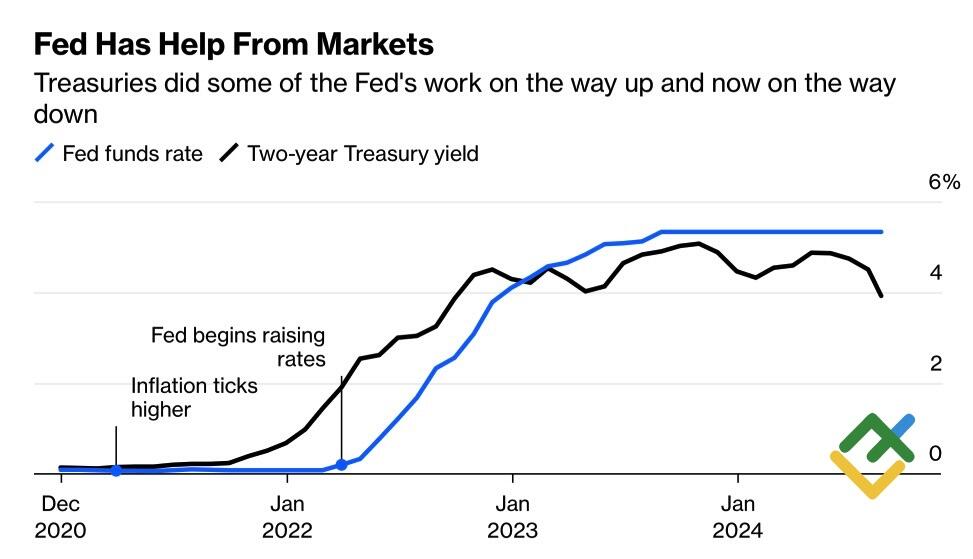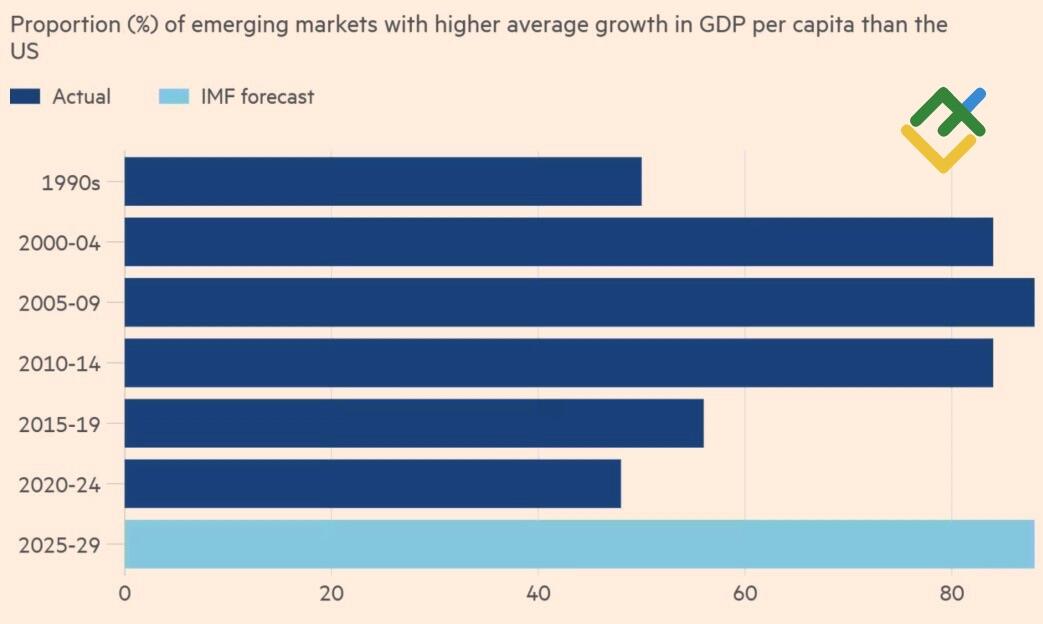
Investors are paying close attention to the upcoming start of the Fed’s monetary expansion cycle and have temporarily set aside concerns about the US presidential election. The associated uncertainty may provide support for the US dollar. Let’s discuss this topic and make a trading plan for the EURUSD pair.
The article covers the following subjects:
Highlights and key points
- Markets are overly optimistic about the Fed’s monetary expansion.
- History shows that sharp rate cuts are inherently unhealthy for the markets.
- Investors should not overlook the US presidential election.
- As long as the EURUSD is trading below 1.118, the risks of a pullback are increasing.
Weekly fundamental forecast for euro
Be afraid of what you wish for. The markets often require more from the Fed than it is able to provide, which can result in criticism of the central bank. For instance, investors have expressed the view that Alan Greenspan reduced interest rates excessively in the wake of the dot-com collapse in 2000. In 2008, Ben Bernanke implemented an expansionary monetary policy that was too accommodating, leading to an overabundance of liquidity in the economy. Janet Yellen maintained low borrowing costs for an extended period beginning in the mid-2010s. It would appear that Jerome Powell was slow to acknowledge the inflationary pressures that were evident at the time, and he is now similarly slow to identify the early signs of a potential recession.
It is inevitable that markets will be disappointed at times, but this is largely a consequence of their capacity to engage in wishful thinking. A case in point would be the rise in US Treasury bond yields prior to the commencement of the latest tightening cycle by the Federal Reserve. However, the yields on US Treasuries are falling despite the fact that the central bank has not yet initiated a loosening of monetary policy. The market is acting in a proactive manner, but its appetite is considerable.
Fed funds rate and US Treasury yield
Source: Bloomberg.
The derivatives market indicates that the Fed’s monetary expansion could reach 200 basis points by the end of 2025, with 100 basis points by the end of 2024. Investors anticipate a 25-basis-point reduction in the federal funds rate in September and December, with a potential additional 50-basis-point cut in November. However, history shows that an abrupt reduction in monetary policy may lead to an increase in the risk of a decline in stock indices. From the market’s perspective, a gradual approach by the central bank is preferable to a sudden change in policy. This conclusion can be drawn from an analysis of the previous 14 full Fed cycles.
The markets are currently focused on the imminent reduction in the federal funds rate, with the forthcoming presidential elections in the US seemingly taking a back seat. A Bank of America analysis revealed that in 10 out of 13 previous cases, the USD index rose in the 70 days preceding the vote. This occurred 77% of the time during this period. Unsurprisingly, increased political uncertainty supports the US dollar as a safe-haven asset.
However, as long as market sentiment remains bullish, EURUSD bears are facing significant challenges. The major currency pair is surging due to the differing rates of monetary expansion between the Fed and the ECB, as well as the narrowing of divergence in economic growth between the US and the rest of the world. The primary source of optimism can be found in the developing world. According to IMF projections, in 88% of these countries, GDP per capita is expected to grow at a faster rate than in the US, which aligns with the expansion seen in the 2000s.
Share of developing countries where GDP will grow faster than in the US
Source: Financial Times.
Weekly trading plan for EURUSD
The euro is a procyclical currency, so the global economy’s growth boosts its value. However, the EURUSD pair could benefit from a correction before continuing its upward trajectory. As long as the pair is trading below 1.118, the optimal strategy suggests selling the euro.
Price chart of EURUSD in real time mode
The content of this article reflects the author’s opinion and does not necessarily reflect the official position of LiteFinance. The material published on this page is provided for informational purposes only and should not be considered as the provision of investment advice for the purposes of Directive 2004/39/EC.
{{value}} ( {{count}} {{title}} )
This post is originally published on LITEFINANCE.





